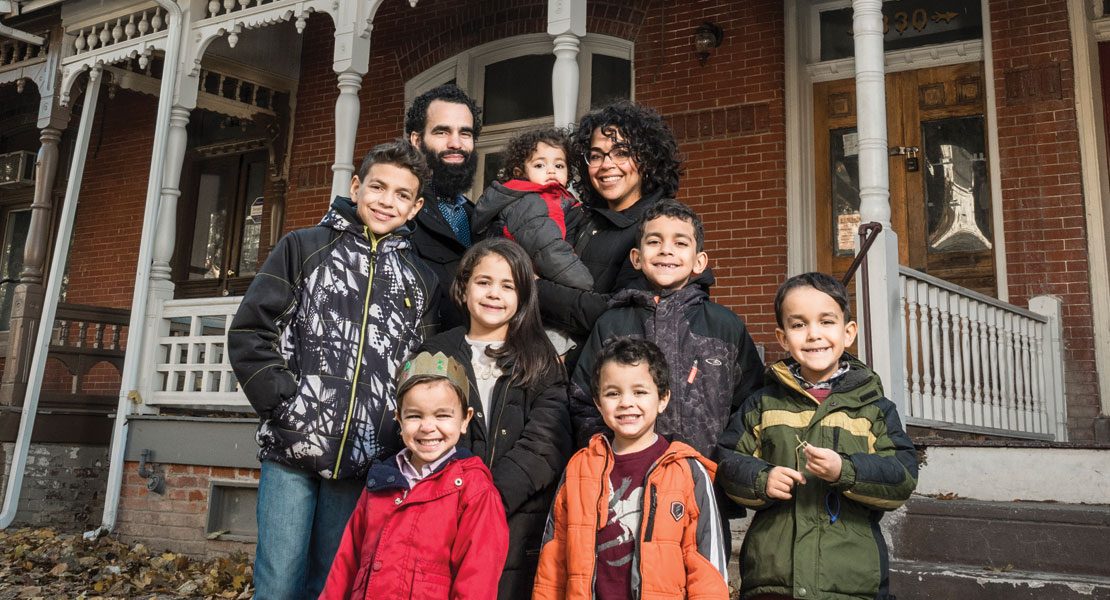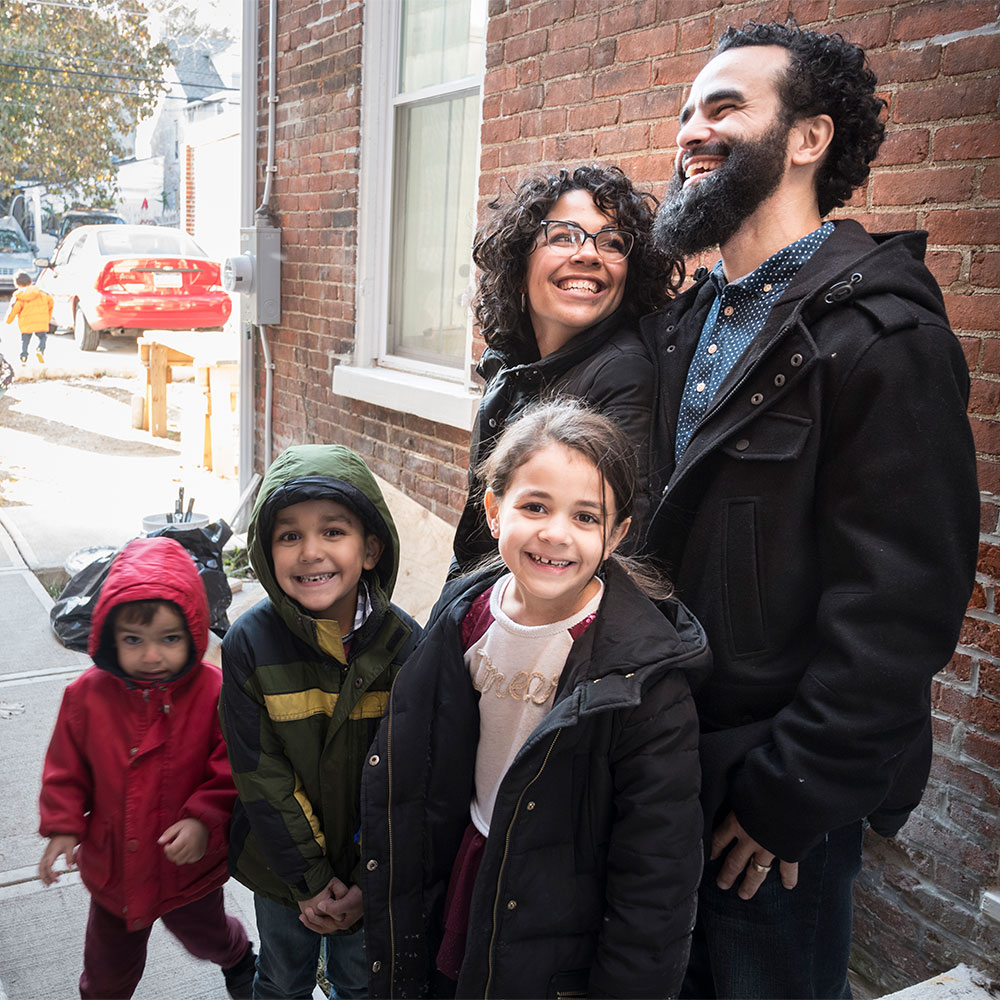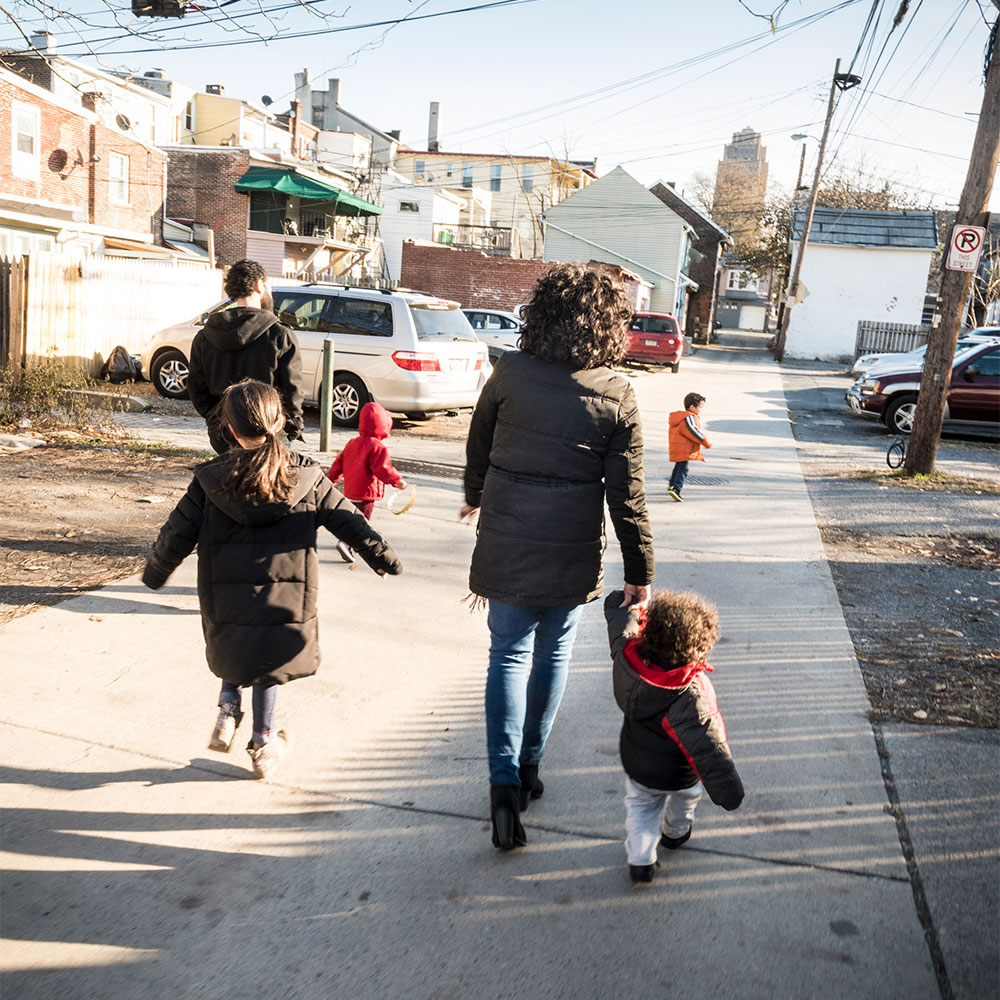Habitat for Humanity of the Lehigh Valley

Home ownership has long been a big part of the American Dream. And plenty of effort goes into it: working, saving, and searching—not to mention maintenance.
But, as John Lennon put it, “Life is what happens to you while you’re busy making other plans,” and some people find that dream dissipating just when it was within reach. That’s what happened to Jinette Ramos and her family—until they encountered Habitat for Humanity.
“We purchased a home just before the real estate bubble broke,” Jinette says.
A Dream Derailed
A confluence of unfortunate circumstances forced the Ramoses to “short-sale” their home. They received less than the balance on their mortgage, the bank took a hit, and their credit rating incurred damage (a lose/lose/lose situation).
Her parents in Pennsylvania provided lodging for a few years but, eventually, it was time to move on. Now a family of nine, the Ramoses couldn’t find an apartment to accommodate them. “And when we tried to restart the home-buying process, the banks told us the short-sale disqualified us, and that we should wait a few more years before applying again,” Jinette said.
While researching alternatives, Jinette learned about Habitat for Humanity of the Lehigh Valley and, with a “what can I lose?” attitude, applied for the program.
The Allentown-based branch of the nonprofit organization has a simple mission: “Habitat for Humanity of the Lehigh Valley helps families break the cycle of poverty and build long-term financial security. Our mission is to help families in need with a hand up, not a hand out.”
That hand up has been extended to scores of families like the Ramoses since Habitat LV opened in 1989. In fewer than 30 years, it has overseen the construction of 112 homes in Lehigh and Northampton counties.
The Dream Attained
Within a few months after applying, the Ramoses learned they’d been accepted—and they expect to be settled in their newly renovated Allentown home by Christmastime this year.
They’ll live in a refurbished six bedroom, two-and-a-half bath home in Allentown’s historic district.
“Brand new homes are three bedroom and two bathroom units in Bethlehem and Easton, and that’s not enough room for all of us,” she says, explaining the use of an existing structure. “Now my kids will have a place they can truly call ‘home.’”



Giving Something Back
In addition to their mortgage, the Ramoses were also obligated to make a down-payment, but not the sort you’d expect. Jinette and her husband Robert must each put in 250 hours of “sweat equity.”
“Because we had bought a home before, all the pre-purchase procedures counted toward our total. It’s sort of like transferring college credits,” she says. In addition, Robert earned his by working on other Habitat homes, as well as theirs. “I did some of that, too,” Jinette says. “That’s going to make us better homeowners, because when you work for something that’s yours, you appreciate it more.”
The experience also taught them how to make certain home repairs themselves.
The balance of Jinette’s time investment comes from working in Habitat’s “ReStore” facility at 1053 Grape Street in Whitehall.
ReStore: A DIY-er’s Dream
If you’re familiar with charity shops such as Goodwill or the Salvation Army, ReStore will surprise you. Its inventory is limited to home improvement materials. In other words, don’t expect old CDs, clothing, or small appliances.
“The ReStore operation has been around for about 30 years,” says operations manager Emily London. “There are about a thousand of them across the country.”
Essentially, ReStore accepts construction or building materials, home furnishings, and similar goods, and sells them to the community at steep discounts—roughly 50 percent below retail.
Although the 14,000-square-foot store’s inventory varies widely—a common situation when you rely on donated materials—typical merchandise includes cabinets, toilets, floor tile, paint, doors, major appliances, bedroom and dining room sets, and various types of home décor.
ReStore even carries over a dozen colors of recycled latex paint, sold under the “recolor” brand name. “In the past year, we’ve recycled over 2,300 gallons of paint that would have otherwise entered the local refuse stream,” Emily said.
Local Donations
All of the store’s stock is donated by individuals, big-box stores, general contractors, and warehouses in Lehigh and Northampton counties. But ReStore isn’t a place to dump odds and ends.
“We accept only usable quantities, such as full boxes of tiles,” she explains. “Appliances must be fewer than 10 years old. Everything must be in good condition—for example, furniture must have no major wear or stains, and appliances must be in working order.”
Habitat for Humanity of the Lehigh Valley helps families break the cycle of poverty and build long-term financial security.
Proceeds from sales go directly into the local Habitat’s general fund and enhance its flexibility. “Habitat LV gets funding from many sources, including grants and corporate donations,” Emily says. “That money is generally designated for certain projects or areas of operation. But the money we raise from ReStore is unrestricted – so we can spend it however it’s needed.”
Emily also noted that monetary donations to Habitat International don’t necessarily benefit the donor’s local community. In contrast, donations given directly to Habitat LV stay in the Lehigh Valley.
Volunteers are ReStore’s backbone “There’s always something for them to do,” Emily says. “Our volunteers help around the office, go out on the truck for pickups, receive and process merchandise, and work on our sales floor—we use them in every aspect of our operation.”
Emily adds that it’s common for people to explore ReStore’s stock instead of heading directly to big retailers. You might find exactly what you need—at a fraction of the retail price—and, ultimately, helping others as well.
How to Help
If you’re interested in donating, visit habitatlvrestore.org for a list of acceptable items, as well as a donation form. You can drop donations (except paint) on-site between 10 a.m. until 4 p.m. Tuesday through Saturday, or arrange for a free pick-up of larger items. Latex paint is collected at various times and locations during the year.
Volunteers are needed to drive the trucks, unload merchandise, and perform many other duties. There’s always something to do, five days a week. As Emily put it, “You don’t have to swing a hammer to help.”












